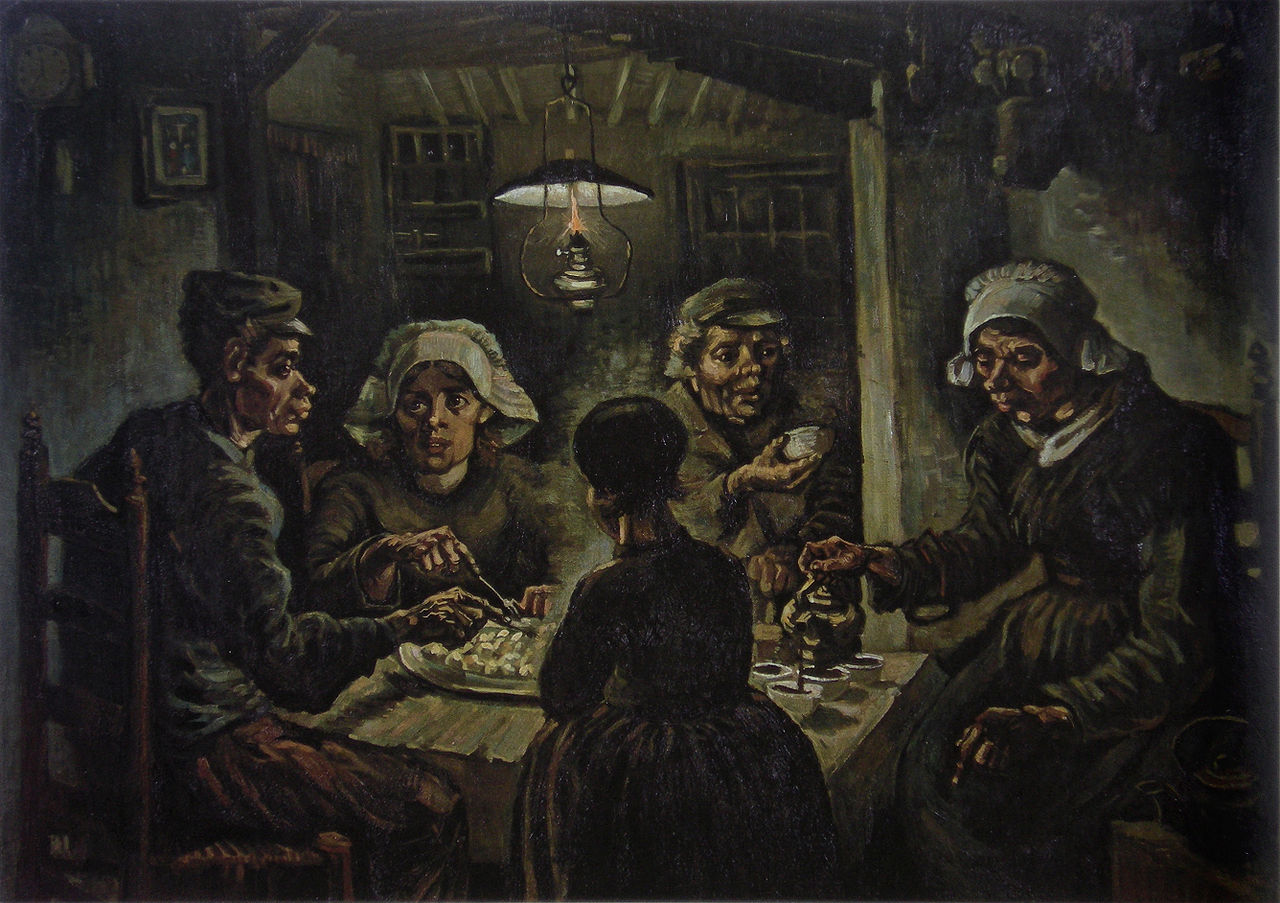Винсент Ван Гог - Едоки картофеля 1885
 |
 |
 |
 |
 |
 |
 |

Едоки картофеля 1885
82x114см холст/масло
Amsterdam, Van Gogh Museum
<< Previous G a l l e r y Next >>
From Van Gogh Museum, Amsterdam:
Van Gogh viewed the Potato Eaters as a kind of showpiece, for which he deliberately chose a difficult composition to prove he was on his way to becoming a good figure painter. He wanted the painting to express the idea that these people ‘have tilled the earth themselves with these hands they are putting in the dish, (…) and that they have thus honestly earned their food,’ he wrote on 30 April 1885 to his brother Theo.
Van Gogh emphasized the harsh reality by exaggerating it. It was gloomy and cramped in the cottage, so his painting had to be similarly dark and constricting.
He limited his palette to greens and browns – the colours of the earth that the family worked – adding a few highlights to intensify the effect. His subjects
had coarse faces and rough hands, so he gave them scrawny features and large, bony fingers.
Van Gogh was very pleased with the result: ‘And it might well prove to be a real peasant painting. I know that it is.’ Nowadays the Potato Eaters is one
of his most celebrated works, yet its dark colours and flawed figures drew considerable criticism at the time. Van Gogh was convinced, however, that these
imperfections contributed to the primitive nature of the subject.